From the medieval knot garden to Victorian displays of carpet bedding, delineation between landscape features has always been important in garden design; defining lawn edges, pathways or paving from neatly planted beds continues to be valuable in our gardens today.
Hardscaping materials such as brick, concrete and terra-cotta have traditionally been used, but there are advantages to using a softer alternative: plants. Plants have the edge in several ways, including being cost effective, providing year-round interest in foliage and flowers and, most of all, having the ability to soften the joint between pathways and plantings.
Both formal and informal edging plantings are suited to contemporary gardens, and today we see a wide range of plants used. Let's look at some interesting examples.
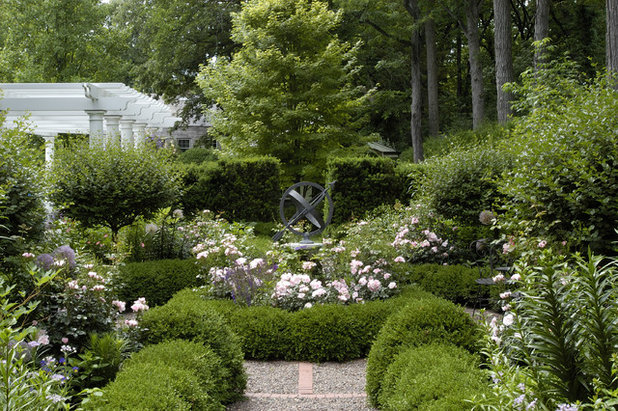
Schmechtig Landscapes
Seventeenth-century English botanist John Parkinson wrote that boxwood hedging "is of excellent use to border up a knot, and a marvellous fine ornament there unto."
Boxwood (
Buxus sp.)
is still the chosen favorite in formal gardens today; whether hard clipped or allowed to grow more loosely, it's stunning.
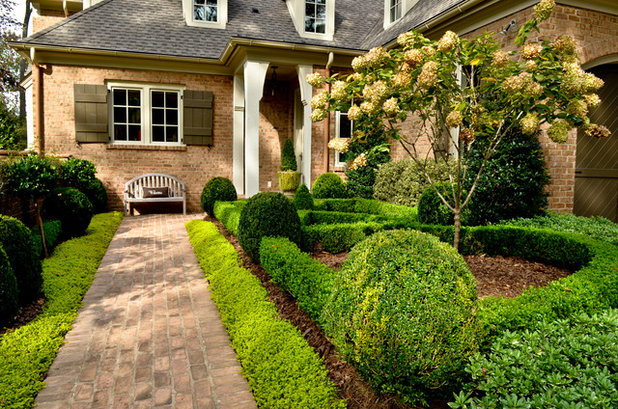
Pam Adams
Here we see low box edging maintaining formal lines, while creeping Jenny
(Lysimachia nummularia) has been used as a lower edging to help soften the edge with the brick paving.
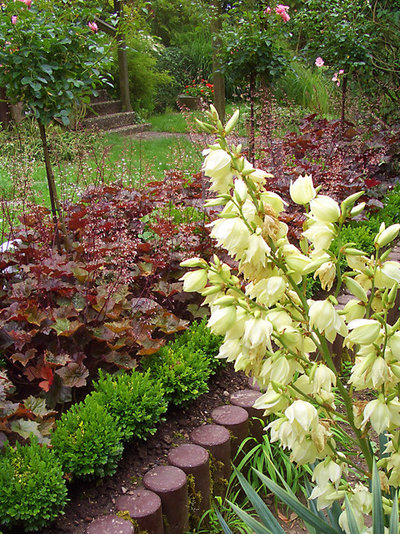
Stefan Laport Landscape Architect IFLA
Contrast foliage, shape and color by double lining edging plants for a dramatic border edge. Purple-leafed flowering
Heuchera, shown here, contrasts so well against the deep green of the neatly clipped boxwood.
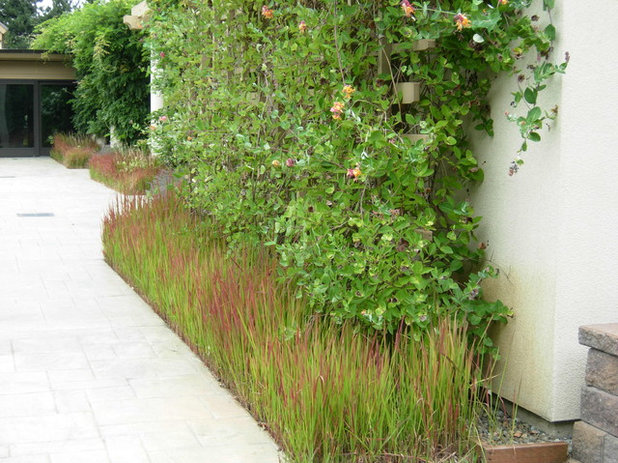
Jamie Van De Vanter
Grasses can be perfect for formal edging plants and are becoming more and more popular for this use.
Here Japanese blood grass (
Imperata cylindrica 'Rubra') shows us just how successful it can be in creating a well-delineated edge to the bed; its vertical nature clearly defines the sharp edge of the paving. (Ornamental grasses used in this fashion also tend to be low maintenance.)
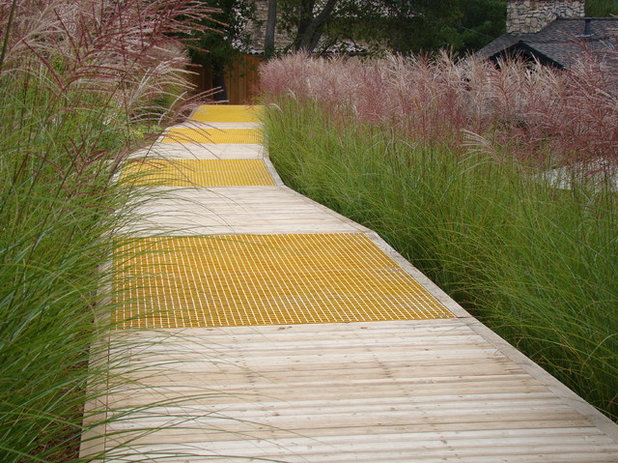
Randy Thueme Design Inc. - Landscape Architecture
Not all planting edges need to be low. The stately lines of tall
Miscanthus sinensis here
show us what a dramatic effect really tall edging plants can create. Here they are used to define the path edge, becoming almost sculptural in form.
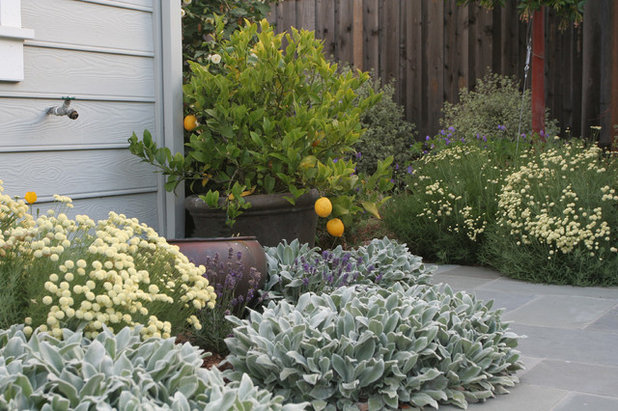
Shades Of Green Landscape Architecture
We can also see a much more natural use of edging plants.
One of the softest edgings that really blends this border to the path is lamb's ears
(Stachys byzantina). Stachys was a favorite edging plant of Gertrude Jekyll, the Edwardian garden designer who taught us how to use color in our borders.
In many of her planting schemes, especially the long color-schemed herbaceous borders for which she is famous, she loved using low-growing silver-foliage plants as edging. She found that the neutral gray-silver coloring harmonized with a variety of colored flowers within her borders.
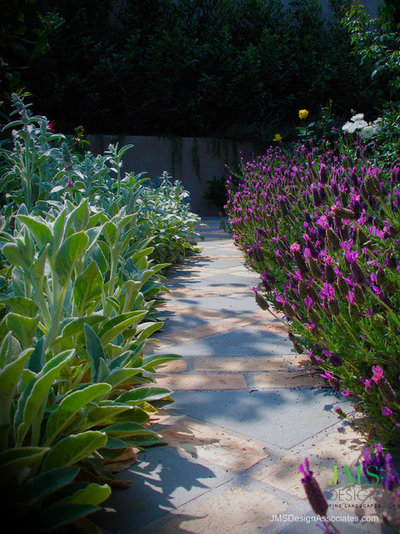
JMSDesignAssociates
The lavender (
Lavandula stoechas 'Hazel') and lamb's ears (
Stachys sp) used here create a low tunnel of flower and scent without restricting the passage along the path.
Once the flowering is over, what's left is the beautiful glaucous, pungent foliage of the lavender on one side, almost mirrored by the silver
Stachys opposite.
Both are happy in dry, well-drained and sunny situations.
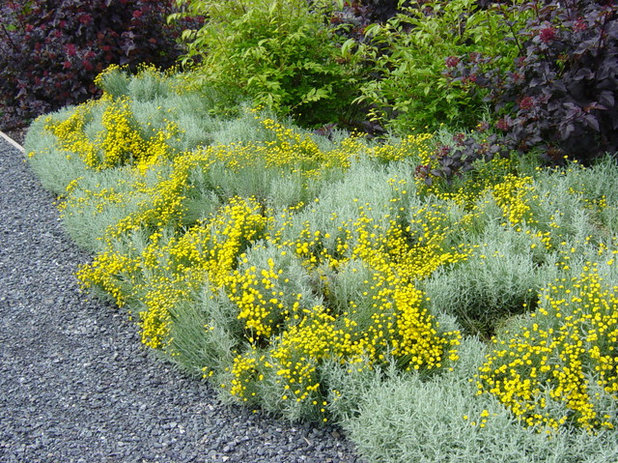
WBLA_Corky
Lavender cotton
(Santolina chamaecyparissus) is another great gray-leafed natural edger. Some people may not like its wayward habit, its bright lemon-yellow pom-pom flowers or its pungent smell, but it's great for blurring the edges of any pathway. If trimmed it can make a very neat, formal, nonflowering edging hedge around 12 to 18 inches tall.
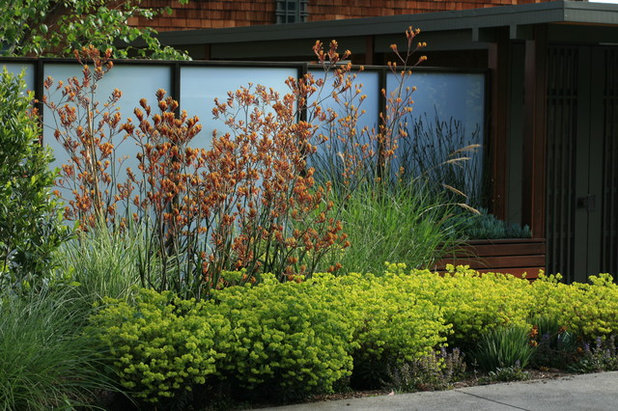
The Garden Route Company
Perennials can be a popular choice for a low edging plant. Their fresh seasonal foliage and flowers overcome the landscape situation of many species' dying back over winter.
This
Euphorbia martini, with its acid-green flowers, creates not only an informal edging but also a great knee-high barrier to deter animals and small children from invading the bed behind.
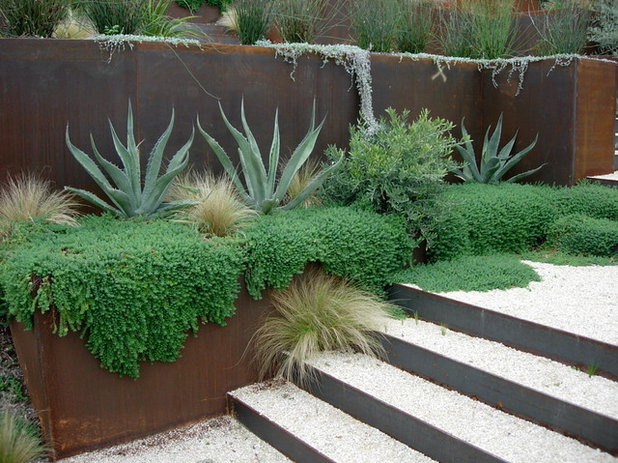
D-CRAIN Design and Construction
It is not only along pathways where informal plantings of edging plants can be used to take the eye off hard edges. Here the steel sides of these raised beds have been draped with a low-growing stonecrop (
Sedum sp) — the contrast against the steel is very effective, in the contrast of both texture and color.
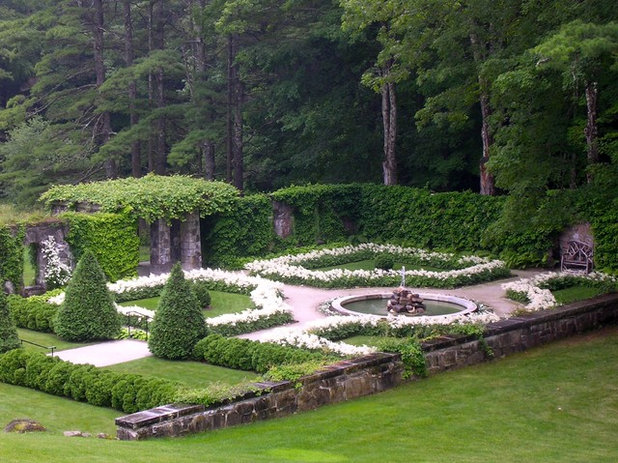
This wonderful parterre perhaps links both styles of edging. The structure is formal, but the stunning white astilbes encompasses the informal.
More: How Low Can Hedges Go? Interesting Garden Borders





